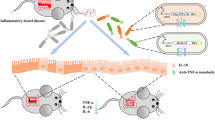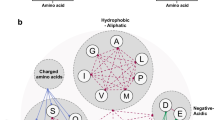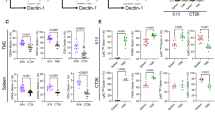Abstract
Lactic acid bacteria are human commensal organisms that have immunomodulatory and metabolism-promoting effects. In addition, due to the increasing demand for biopharmaceuticals, genetically modified lactic acid bacteria (gmLAB) that produce recombinant proteins are expected to be used as microbial therapeutics and next-generation probiotics. In this study, we constructed a gmLAB strain that produces anti-human cytotoxic T lymphocyte-associated antigen 4 (CTLA-4) single-chain fragment variable (CTLA4scFv) for possible use in a cancer treatment strategy using gmLAB. CTLA-4, an immune checkpoint molecule, suppresses the anti-cancer immune response; thus, inhibition of CTLA-4 signaling is important in cancer therapy. In this study, we designed a CTLA4scFv composed of a heavy and light chain of the variable region from anti-human CTLA-4 antibody connected by a flexible peptide linker. CTLA4scFv was expressed using nisin controlled gene expression (NICE) system, a lactococcal inducible gene expression system, and the DNA sequence encoding CTLA4scFv was inserted downstream of the PnisA promoter of the gene expression vector pNZ8148#2. Furthermore, expression of recombinant CTLA4scFv was confirmed by Western blotting, and the immunoreactivity of recombinant CTLA4scFv against human CTLA-4 protein was examined using ELISA. We speculate that gmLAB producing bioactive CTLA4scFv will become an attractive approach for cancer treatment.




Similar content being viewed by others
References
Food, Organization, A. and Organization, W. H. (2006). Probiotics in food: Health and nutritional properties and guidelines for evaluation, FAO.
Hill, C., Guarner, F., Reid, G., Gibson, G. R., Merenstein, D. J., Pot, B., et al. (2014). Expert consensus document: The 501 international scientific association for probiotics and prebiotics consensus statement on 502 the scope and appropriate use of the term probiotic. Nature Reviews Gastroenterology & Hepatology, 11, 506–514.
Vallianou, N., Stratigou, T., Christodoulatos, G. S., Tsigalou, C., & Dalamaga, M. (2020). Probiotics, prebiotics, synbiotics, postbiotics, and obesity: Current evidence, controversies, and perspectives. Current Obesity Reports.
Yousefi, B., Eslami, M., Ghasemian, A., Kokhaei, P., Salek Farrokhi, A., & Darabi, N. (2019). Probiotics importance and their immunomodulatory properties. Journal of Cellular Physiology, 234, 8008–8018.
Shigemori, S., & Shimosato, T. (2017). Applications of genetically modified immunobiotics with high immunoregulatory capacity for treatment of inflammatory bowel diseases. Frontiers in Immunology, 8, 22.
O'Toole, P. W., Marchesi, J. R., & Hill, C. (2017). Next-generation probiotics: The spectrum from probiotics to live Biotherapeutics. Nature Microbiology, 2, 17057.
Jimenez, M., Langer, R., & Traverso, G. (2019). Microbial therapeutics: New opportunities for drug delivery. The Journal of Experimental Medicine, 216, 1005–1009.
Shigemori, S., Watanabe, T., Kudoh, K., Ihara, M., Nigar, S., Yamamoto, Y., et al. (2015). Oral delivery of Lactococcus lactis that secretes bioactive heme oxygenase-1 alleviates development of acute colitis in mice. Microbial Cell Factories, 14, 189.
McLean, M. H., Andrews, C., Hanson, M. L., Baseler, W. A., Anver, M. R., Senkevitch, E., et al. (2017). Interleukin-27 is a potential rescue therapy for acute severe colitis through interleukin-10–dependent, T-cell–independent attenuation of colonic mucosal innate immune responses. Inflammatory Bowel Diseases, 23, 1983–1995.
Hanson, M. L., Hixon, J. A., Li, W., Felber, B. K., Anver, M. R., Stewart, C. A., et al. (2014). Oral delivery of IL-27 recombinant bacteria attenuates immune colitis in mice. Gastroenterology, 146, 210–221.
Steidler, L., Hans, W., Schotte, L., Neirynck, S., Obermeier, F., Falk, W., et al. (2000). Treatment of murine colitis by Lactococcus lactis secreting interleukin-10. Science, 289, 1352–1355.
Ahmad, Z. A., Yeap, S. K., Ali, A. M., Ho, W. Y., Alitheen, N. B., & Hamid, M. (2012). scFv antibody: Principles and clinical application. Clinical and Developmental Immunology, 2012, 980250.
Bird, R. E., Hardman, K. D., Jacobson, J. W., Johnson, S., Kaufman, B. M., Lee, S. M., et al. (1988). Single-chain antigen-binding proteins. Science, 242, 423–426.
Shigemori, S., Ihara, M., Sato, T., Yamamoto, Y., Nigar, S., Ogita, T., et al. (2017). Secretion of an immunoreactive single-chain variable fragment antibody against mouse interleukin 6 by Lactococcus lactis. Applied Microbiology and Biotechnology, 101, 341–349.
Walunas, T. L., Lenschow, D. J., Bakker, C. Y., Linsley, P. S., Freeman, G. J., Green, J. M., et al. (1994). CTLA-4 can function as a negative regulator of T cell activation. Immunity, 1, 405–413.
Ribas, A., & Wolchok, J. D. (2018). Cancer immunotherapy using checkpoint blockade. Science, 359, 1350–1355.
Graziani, G., Tentori, L., & Navarra, P. (2012). Ipilimumab: a novel immunostimulatory monoclonal antibody for the treatment of cancer. Pharmacological Research, 65, 9–22.
Samaranayake, H., Wirth, T., Schenkwein, D., Raty, J. K., & Yla-Herttuala, S. (2009). Challenges in monoclonal antibody-based therapies. Annals of Medicine, 41, 322–331.
Mierau, I., & Kleerebezem, M. (2005). 10 years of the nisin-controlled gene expression system (NICE) in Lactococcus lactis. Applied Microbiology and Biotechnology, 68, 705–717.
Shigemori, S., Yonekura, S., Sato, T., Nakanishi, M., Otani, H., & Shimosato, T. (2012). Expression of a biologically active GFP-α S1-casein fusion protein in Lactococcus lactis. Current Microbiology, 64, 569–575.
Schwede, T., Kopp, J., Guex, N., & Peitsch, M. C. (2003). SWISS-MODEL: An automated protein homology-modeling server. Nucleic Acids Research, 31, 3381–3385.
Shigemori, S., Namai, F., Yamamoto, Y., Nigar, S., Sato, T., Ogita, T., & Shimosato, T. (2017). Genetically modified Lactococcus lactis producing a green fluorescent protein–bovine lactoferrin fusion protein suppresses proinflammatory cytokine expression in lipopolysaccharide-stimulated RAW 264.7 cells. Journal of Dairy Science, 100, 7007–7015.
Namai, F., Yamamoto, Y., Sato, T., Ogita, T., & Shimosato, T. (2018). Recombinant mouse calcitonin gene-related peptide secreted by Lactococcus lactis inhibits lipopolysaccharide-induced inflammatory response in macrophages. Animal Science Journal, 89, 1707–1711.
Namai, F., Shigemori, S., Sudo, K., Sato, T., Yamamoto, Y., Nigar, S., et al. (2018). Recombinant mouse osteocalcin secreted by Lactococcus lactis promotes glucagon-like peptide-1 induction in STC-1 cells. Current Microbiology, 75, 92–98.
Namai, F., Shigemori, S., Ogita, T., Sato, T., & Shimosato, T. (2020). Construction of genetically modified Lactococcus lactis that produces bioactive anti-interleukin-4 single-chain fragment variable. Molecular Biology Reports. https://doi.org/10.1007/s11033-020-05765-0.
Rowshanravan, B., Halliday, N., & Sansom, D. M. (2018). CTLA-4: A moving target in immunotherapy. Blood, 131, 58–67.
Buchbinder, E. I., & Desai, A. (2016). CTLA-4 and PD-1 pathways: Similarities, differences, and implications of their inhibition. American Journal of Clinical Oncology, 39, 98–106.
Takahashi, T., Tagami, T., Yamazaki, S., Uede, T., Shimizu, J., Sakaguchi, N., et al. (2000). Immunologic self-tolerance maintained by CD25+ CD4+ regulatory T cells constitutively expressing cytotoxic T lymphocyte–associated antigen 4. The Journal of Experimental Medicine, 192, 303–310.
Wing, K., Onishi, Y., Prieto-Martin, P., Yamaguchi, T., Miyara, M., Fehervari, Z., et al. (2008). CTLA-4 control over Foxp3+ regulatory T cell function. Science, 322, 271–275.
Whiteside, T. L. (2012). What are regulatory T cells (Treg) regulating in cancer and why? Seminars in Cancer Biology, 22, 327–334.
Ondondo, B., Jones, E., Godkin, A., & Gallimore, A. (2013). Home sweet home: The tumor microenvironment as a haven for regulatory T cells. Frontiers in Immunology, 4, 197.
Boutros, C., Tarhini, A., Routier, E., Lambotte, O., Ladurie, F. L., Carbonnel, F., et al. (2016). Safety profiles of anti-CTLA-4 and anti-PD-1 antibodies alone and in combination. Nature Reviews Clinical Oncology, 13, 473–486.
Vaks, L., & Benhar, I. (2014). Production of stabilized scFv antibody fragments in the E. coli bacterial cytoplasm. Methods and Molecular Biology, 1060, 171–184.
de Ruyter, P. G., Kuipers, O. P., & de Vos, W. M. (1996). Controlled gene expression systems for Lactococcus lactis with the food-grade inducer nisin. Applied and Environmental Microbiology, 62, 3662–3667.
Kuipers, O. P., de Ruyter, P. G., Kleerebezem, M., & de Vos, W. M. (1997). Controlled overproduction of proteins by lactic acid bacteria. Trends in Biotechnology, 15, 135–140.
Bray, F., Ferlay, J., Soerjomataram, I., Siegel, R. L., Torre, L. A., & Jemal, A. (2018). Global cancer statistics 2018: GLOBOCAN estimates of incidence and mortality worldwide for 36 cancers in 185 countries. CA: A Cancer Journal for Clinicians, 68, 394–424.
de Moreno, A. D., LeBlanc, J. G., Perdigon, G., Miyoshi, A., Langella, P., Azevedo, V., et al. (2008). Oral administration of a catalase-producing Lactococcus lactis can prevent a chemically induced colon cancer in mice. Journal of Medical Microbiology, 57, 100–105.
Ciacma, K., Wieckiewicz, J., Kedracka-Krok, S., Kurtyka, M., Stec, M., Siedlar, M., et al. (2018). Secretion of tumoricidal human tumor necrosis factor-related apoptosis-inducing ligand (TRAIL) by recombinant Lactococcus lactis: Optimization of in vitro synthesis conditions. Microbial Cell Factories, 17, 177.
Jacouton, E., Torres Maravilla, E., Boucard, A. S., Pouderous, N., Pessoa Vilela, A. P., Naas, I., et al. (2018). Anti-tumoral effects of recombinant Lactococcus lactis strain secreting IL-17A cytokine. Frontiers in Microbiology, 9, 3355.
Hryniewicki, A. T., Wang, C., Shatsky, R. A., & Coyne, C. J. (2018). Management of immune checkpoint inhibitor toxicities: a review and clinical guideline for emergency physicians. The Journal of Emergency Medicine, 55, 489–502.
Acknowledgements
This work was supported by a Grant-in-Aid for JSPS Fellows, JP201922578. We thank the Research Center for Support of Advanced Science, Shinshu University, for use of their facilities.
Author information
Authors and Affiliations
Contributions
FN, AM, AU, MT, and SS performed the experiments and analyzed the data; TSa and TO contributed reagents, materials, and/or analytical tools; TSh designed the research project. FN and TSh wrote the paper.
Corresponding author
Ethics declarations
Conflict of interest
All authors declare that they have no conflict of interest.
Additional information
Publisher's Note
Springer Nature remains neutral with regard to jurisdictional claims in published maps and institutional affiliations.
Rights and permissions
About this article
Cite this article
Namai, F., Murakami, A., Ueda, A. et al. Construction of Genetically Modified Lactococcus lactis Producing Anti-human-CTLA-4 Single-Chain Fragment Variable. Mol Biotechnol 62, 572–579 (2020). https://doi.org/10.1007/s12033-020-00274-8
Accepted:
Published:
Issue Date:
DOI: https://doi.org/10.1007/s12033-020-00274-8




